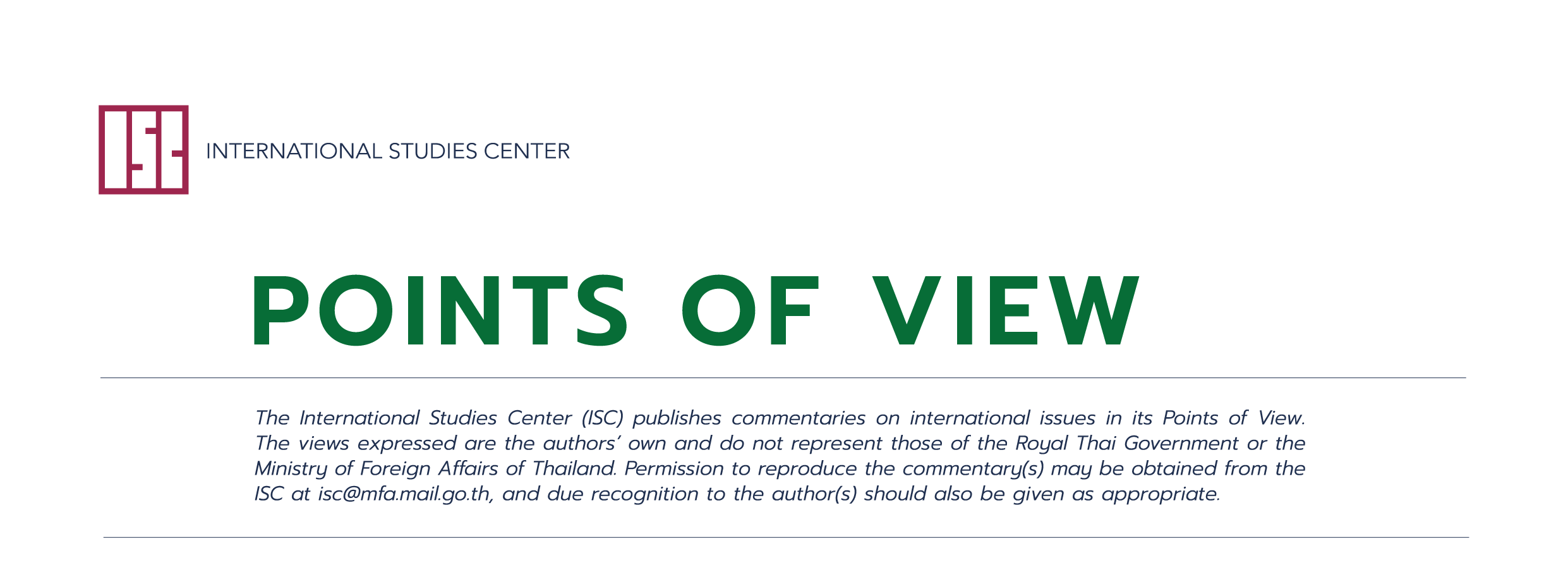What Did ASEAN Do When Facing Challenges? | Kavi Chongkittavorn
What Did ASEAN Do When Facing Challenges? | Kavi Chongkittavorn
วันที่นำเข้าข้อมูล 29 Aug 2022
วันที่ปรับปรุงข้อมูล 14 Dec 2022
 |
No. 9/2022 | August 2022
What Did ASEAN Do When Facing Challenges?
Kavi Chongkittavorn*
(Download .pdf below)
Throughout the decades, a frequently asked question has always been ASEAN’s response in times of crisis. From the very first day of its establishment on 8 August, 1967, the founding fathers knew full well that in the future the bloc would face formidable challenges. After all, with the exception of Thailand, all the founding members were fresh from decolonisation and hence were very protective when trying to ward off any external or disruptive forces in the region.
Obviously, they had no idea that after five-and-a-half decades, ASEAN would still be around and currently tackling both intra-ASEAN matters and external crises. Had they known that the global environment would become the bifurcated entity it is today, they would still have stuck to their original wisdom of consensus making and strengthening cooperation among the Southeast Asian countries to maintain peace and enhance economic prosperity without interfering in the internal affairs of others.
Earlier treaties and declaration include Zone of Peace, Freedom and Neutrality (ZOPFAN-1971), Treaty of Amity and Cooperation in Southeast Asia (TÁC-1976), Treaty of Southeast Asia Nuclear Weapons Free Zone (SEANWFZ-1995) are still relevant today. Some ASEAN member countries are thinking of revisit the ZOPFAN declaration given the present geopolitical and geoeconomic situation.
ASEAN will continue as a fulcrum on which all powers can converge for dialogue and cooperation. Today, ASEAN still has both convening and convincing power, which must be nurtured. Given the current disruptive world, it will require more of the bloc’s political will and solidarity to sustain the status quo. The ASEAN way is the bloc’s most enduring soft power.
Over the decades, ASEAN has responded to unexpected challenges that crop up in their midst. Obviously, most of the attention has been focused on the hot political issues of the day—the Cambodian conflict, the South China Sea conflict, the Rohingya refugee crisis, plights of migrant workers and the Myanmar quagmire. ASEAN has left its hallmark on the international stage due to its efforts on the resolution of the 13-year old civil war in Cambodia. But there are other efforts worth referring to as ASEAN is 55 years old.
During the Asian economic crisis in 1997-98, ASEAN came up with Chiang Mai Initiative Multilateralism, a self-help mechanism, to facilitate the flow of financial assistance among the ASEAN members and its East Asian partners, China, Japan and South Korea. Now, the US$240 billion fund is available for the members to improve cash flow in case there is a sudden shortage of capital. This initiative continues to function today.
As the economic slowdown started in Europe in 2008, ASEAN was quick to work on connectivity and set up the Infrastructure Fund for ASEAN. At the time, “connectivity” was not yet a buzz word as “globalisation” still dominated the cross-border discourse and the glorious era of multilateralism. However, these days, all things related to connectivity have already become weaponised due to the strategic competition between the US and China. Indeed, countries in East Asia have long cooperated and invested in connectivity in all aspects as well as investing in infrastructure projects as they know these are prerequisites for further developmental progress.
Due to the US-China hostility and the severe impacts of the Covid-19 pandemic, the existing all-around connectivity throughout the world has been disconnected or damaged, causing a disruption in supply and production chains across borders, especially between the West and the East. The US is determined to undermine China’s networks of supply chains, which exist throughout the world. Fortunately, within East Asia, the resilience among the production chains is very high and the impacts have thus been less negative.
The ASEAN Charter has imbedded ASEAN centrality and neutrality in both regional and global setting. As a response to the increased protectionist tendency, ASEAN then pushed its members to work on the Regional Comprehensive Economic Cooperation in 2012. After eight years of arduous negotiations, ASEAN and five dialogue partners, namely China, Japan, South Korea, Australia and New Zealand, came together and the RCEP was born in 2020. It has become the world’s largest free trade arrangement accounting for a third of the world gross domestic products and almost half of the world’s population.
In the age of Indo-Pacific today, ASEAN has also moved quickly on the chess-board of superpowers’ competition. In 2019, ASEAN released the ASEAN Outlook on the Indo-Pacific, which is inclusive and not aimed at any third party. At the moment, ASEAN has plans to operationalise identified priorities in maritime cooperation, sustainability, connectivity and economic cooperation.
Other timely ASEAN responses and achievements that were less well known included the ASEAN Plus Three Emergency Rice Reserve, the ASEAN Humanitarian Assistance Center, and the ASEAN Emergency Rapid Assessment Team, among others.
[*] Senior Visiting Fellow at Korea National Diplomatic Academy (KNDA)